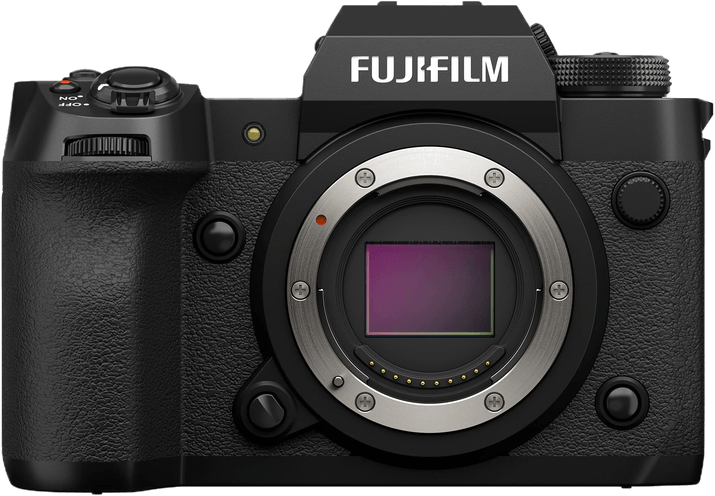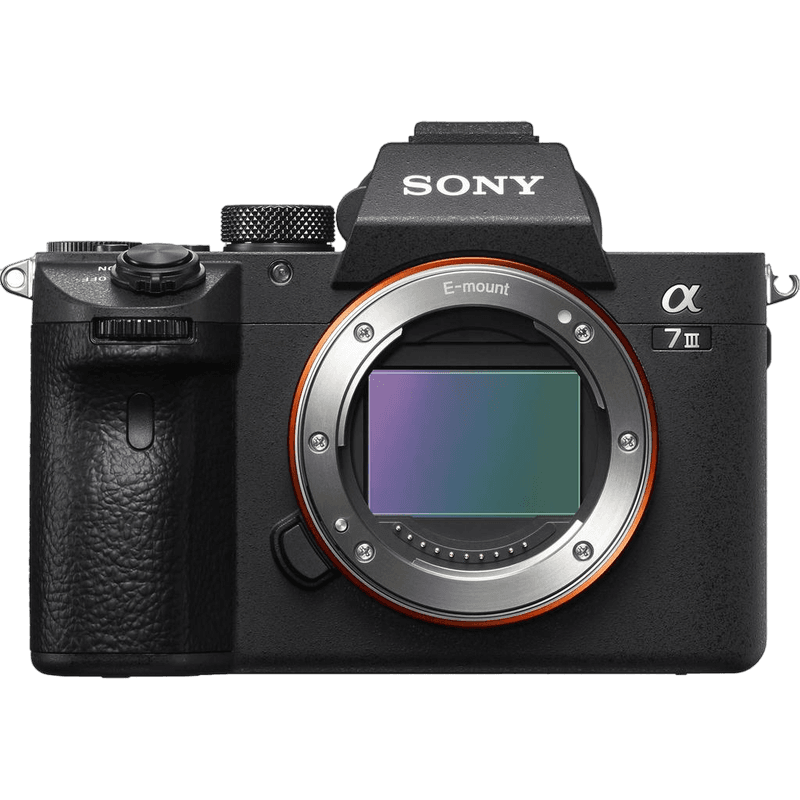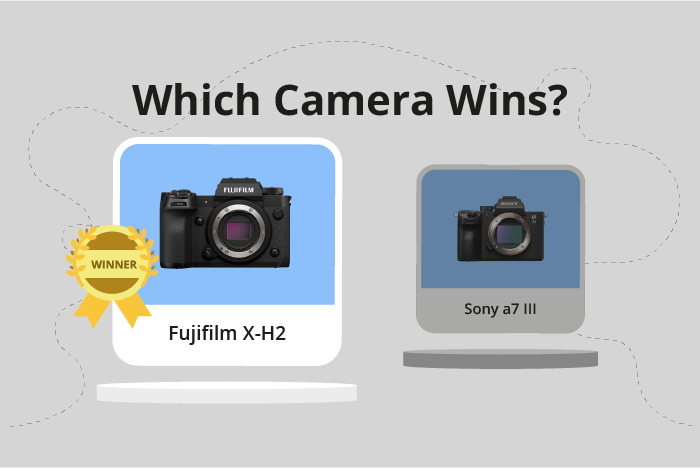Fujifilm X-H2 vs Sony a7 III Comparison
Fujifilm X-H2

Sony a7 III

The Fujifilm X-H2 edges out the Sony a7 III with a score of 82/100 as opposed to 80/100. Both cameras are mirrorless and were launched at a similar price, around $2000. They share comparable weights, with the X-H2 weighing 660g and the a7 III weighing 650g.
The Fujifilm X-H2 stands out due to its more recent release in 2022, while the Sony a7 III was released in 2018. This gives the X-H2 an advantage in terms of newer technology and features. The X-H2 is also slightly larger in size, measuring 136 x 93 x 95mm, compared to the a7 III’s 127 x 96 x 74mm dimensions.
On the other hand, the Sony a7 III’s smaller size makes it a more compact option for those who prioritize portability. Despite the slight difference in scores, both cameras offer excellent performance and value for their price. Ultimately, the choice between the Fujifilm X-H2 and Sony a7 III depends on individual preferences and priorities in a camera.
Fujifilm X-H2 vs Sony a7 III Overview and Optics
The Fujifilm X-H2 and the Sony a7 III both achieve an optics score of 81/100, indicating a tie in terms of optical performance. These cameras share common features, such as a CMOS sensor, image stabilization, and compatibility with their respective lens mounts (Fujifilm X and Sony FE).
The Fujifilm X-H2 excels with its 40-megapixel sensor and a shooting speed of 15 frames per second, compared to the Sony a7 III’s 24.2-megapixel sensor and 10 frames per second. The X-H2’s X-Processor 5 also contributes to its impressive performance. These factors make the Fujifilm X-H2 superior for capturing high-resolution images and fast-paced action.
On the other hand, the Sony a7 III has a full-frame sensor, while the Fujifilm X-H2 has an APS-C sensor. The a7 III’s larger sensor allows for better low-light performance and increased dynamic range. Additionally, the Sony a7 III boasts a high DXOMARK sensor score of 96, which is not available for the Fujifilm X-H2 as DXOMARK does not score Fujifilm cameras. These aspects give the Sony a7 III an edge in terms of image quality and low-light capability.
Despite the differences, both cameras offer excellent optical performance. The Fujifilm X-H2 is ideal for photographers who prioritize high-resolution images and fast shooting speeds, while the Sony a7 III is better suited for those who value image quality and low-light performance. Ultimately, the choice between these two cameras depends on the specific needs and preferences of the photographer.
Fujifilm X-H2 vs Sony a7 III Video Performance
The Fujifilm X-H2 outperforms the Sony a7 III in video capabilities. Both cameras share some common specifications, such as 4K maximum video resolution and 3840 x 2160 maximum video dimensions.
The Fujifilm X-H2 surpasses the Sony a7 III in video frame rate, offering 60fps compared to the Sony a7 III’s 30fps. This higher frame rate allows for smoother motion and better slow-motion capabilities in the X-H2.
Considering these differences, the Fujifilm X-H2 is the clear winner in video capabilities. Its higher video frame rate and built-in time-lapse functionality provide more creative options and better overall video performance. The Sony a7 III, while still offering 4K video, falls short in comparison due to its lower frame rate and lack of time-lapse functionality.
Fujifilm X-H2 vs Sony a7 III Features and Benefits
The Fujifilm X-H2 emerges as the winner in terms of features, scoring 85/100, while the Sony a7 III scores 81/100. Both cameras share several specifications, including a 3-inch screen size, touchscreen capability, flip screen, absence of GPS, and the presence of WIFI and Bluetooth.
The Fujifilm X-H2 stands out with its superior screen resolution of 1,620,000 dots compared to the Sony a7 III’s 921,600 dots. This higher resolution allows users to view images and videos with greater clarity and detail on the X-H2. The four-point difference in the feature score also highlights the X-H2’s edge in providing a more comprehensive user experience.
Despite having a lower score, the Sony a7 III still has its merits. Both cameras possess the same screen size, touchscreen, flip screen, and connectivity options, showing that the a7 III does not lag far behind the X-H2. While its screen resolution is lower, it still offers users a satisfactory viewing experience, especially if they do not require extremely high-resolution displays.
Considering these points, the Fujifilm X-H2 proves to be the better choice for those who prioritize higher screen resolution and a slightly more advanced feature set. On the other hand, the Sony a7 III remains a solid option for users who are content with a lower screen resolution and a slightly less competitive feature score. Ultimately, the choice between these two cameras will depend on individual preferences and specific requirements.
Fujifilm X-H2 vs Sony a7 III Storage and Battery
Both cameras possess two memory card slots, with the X-H2 accepting CFexpress Type B and SD (UHS-II Compatible) cards, while the a7 III takes SD/SDHC/SDXC and Memory Stick Duo/Pro Duo/Pro-HG Duo cards.
However, the a7 III holds a slight advantage in battery life, offering 750 shots compared to the X-H2’s 680 shots. Despite this, the Fujifilm X-H2’s NP-W235 battery type and overall storage and battery score make it the superior choice for photographers seeking extended shooting sessions and better storage options.
Alternatives to the Fujifilm X-H2 and Sony a7 III
Are you still undecided about which camera is right for you? Have a look at these popular comparisons that feature the Fujifilm X-H2 or the Sony a7 III:

